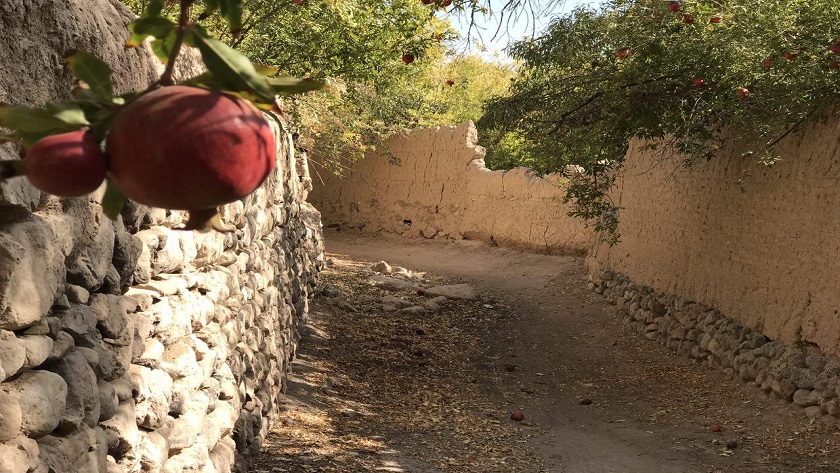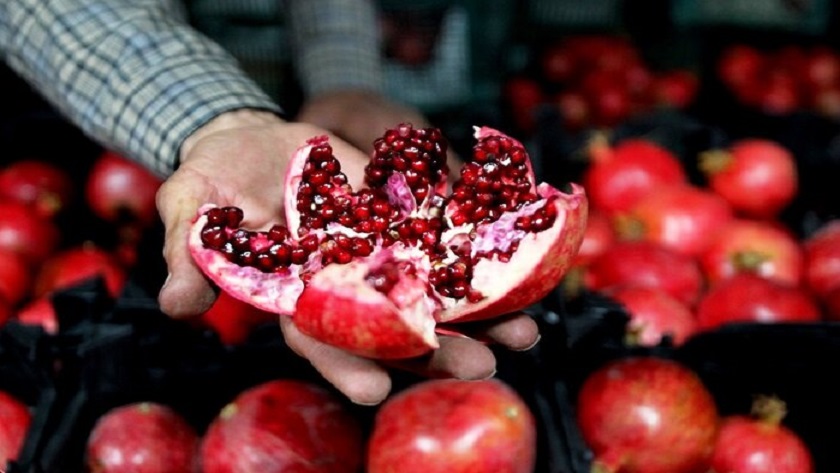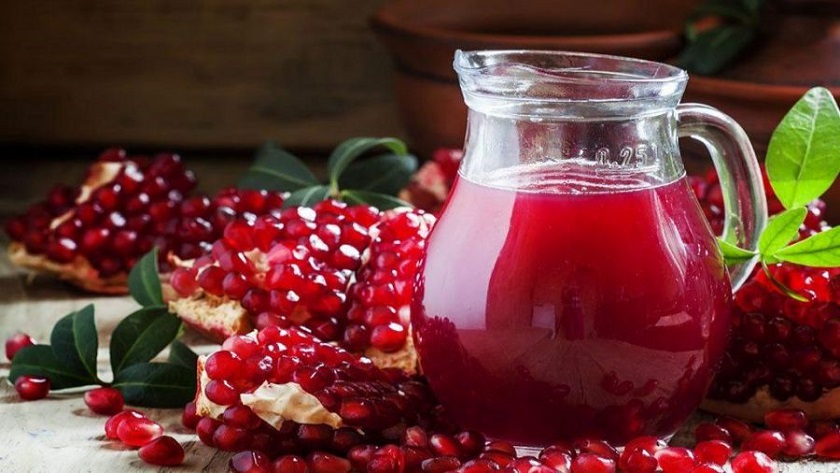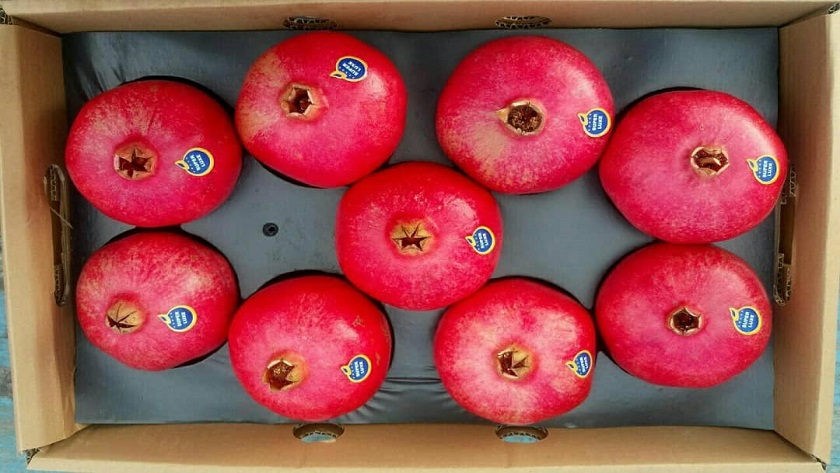Iran Press/ Iran news: Pomegranate, as a garden fruit, is as old as four thousand years. Most researchers and botanists believe that the pomegranate tree is native to Iran. They say this tree was then transferred to India, North Africa, China, Europe and the US.
The pomegranate with the scientific name Punica granatum is a fruit-bearing shrub that grows as high as 5-10 meters.
 Garden alley bearing pomegranate tree in Semnan, Iran.
Garden alley bearing pomegranate tree in Semnan, Iran.
Currently, the Islamic Republic of Iran with more than sixty thousand hectares of land under cultivation of pomegranate as well as producing nearly one million tons of this fruit per year is known as the top producer and exporter of pomegranate in the world.
Related News: Pistachio; What Iran is known for
 Iran produces high-quality pomegranate
Iran produces high-quality pomegranate
The fruit is typically in season in the Northern hemisphere from September to February and in the Southern hemisphere from March to May. The pomegranate tree can tolerate high temperatures with dry winds and also cold up to minus 10 degrees centigrade, so this fruit can be cultivated in many regions of the world. The pomegranate leaves often grow opposite each other, they are glossy, narrow and oblong. The flowers are bright red and 3 cm in diameter, with three to seven petals. The number of seeds in a pomegranate can vary from 200 to about 1,400. The pomegranate is known as the miracle of natural foods because of its astounding shape of the fruit.
 Pomegranate is venerated in Islam as a paradise fruit
Pomegranate is venerated in Islam as a paradise fruit
Cultural, Religious significance
In the noble Quran, the word pomegranate has been mentioned several times.
In ayah 99 of surah Anaam of the Quran, God has mentioned that the creation of the heavens, the rainfall, and the growth of plants and orchards including pomegranate are the signs of the greatness of God. God says in ayah 68 of surah Al- Rahmaan that pomegranate is among the fruits that are available for the faithful in paradise.
Furthermore, in ayah 141 of surah Anaam, God advises his creatures to eat pomegranates.
Abu Ali Sina, believed that the best pomegranate is the sweet one. He also believed that every part of pomegranate has medicinal effects.
As a tradition, pomegranate festivals are held across Iran to celebrate the harvest season during the autumn every year.
Related News: Iranian Caviar; what Iran is known for
 Pomegranate is greatly rich in nutrients
Pomegranate is greatly rich in nutrients
Read More: Saffron; what Iran is known for
Health Benefits
Researchers have shown that this fruit has many nutritional benefits and can prevent many diseases. This fruit is used in the pharmaceutical industry too.
This fruit contains vast amounts of vitamins B1, B2, and C, and minerals like iron, magnesium, potassium, phosphorus and sodium. Pomegranate refines the blood and prevents diabetes. Pomegranate also cures diseases like asthma, severe cough, and other respiratory diseases. This fruit is also recommended to those who suffer from heart diseases. In Iranian traditional and herbal medicine, this fruit is recommended for the better activity of kidneys.
 Pomegranate is a rich nutrient fruit
Pomegranate is a rich nutrient fruit
This fruit fights urea, high blood pressure, prostate cancer, Alzheimer’s disease, aging and obesity.
Pomegranate juice contains higher levels of antioxidants than most other fruit juices. The antioxidants in pomegranate juice can help remove free radicals, protect cells from decay, and reduce inflammation. Pomegranate also prevents depression and stress and using it makes you happy.
 Iranian Pomegranate is cultivated in various provinces
Iranian Pomegranate is cultivated in various provinces
Read More: Iranian Ab Anar (Pomegranate Juice) lessens Summer torrid times
Varieties and cultivation sites
The Islamic Republic of Iran with more than sixty thousand hectares of land under cultivation of pomegranate as well as producing nearly one million tons of this fruit is recognized as the biggest producer and exporter of pomegranate in the world.
 Pomegranate cultivation in Iran
Pomegranate cultivation in Iran
More than 700 species of pomegranates are produced in many provinces including Khorasan, Yazd, Isfahan, Fars, Gilan, Lorestan, Kermanshah and Markazi. The regions of Saveh, Neyriz, Ferdows, Kashan and Bajestan are the main regions that produce pomegranates in Iran. Pomegranates from Saveh enjoy global fame because of their high quality, sweetness, thin peel, long preservation and being organic. Saveh pomegranates have the highest Brix degree ( the sugar, sucrose, or water-soluble content on a percent by weight basis) among other varieties,

Here some notable varieties are mentioned.
Gilan: The highest level of cultivation of sour pomegranate orchards in Gilan is located in Masal city and the highest level of cultivation of sweet pomegranate orchards is located in Rudbar city, the most indigenous and sour pomegranates grow in Gilan.
Lorestan province: Kuhdash's pomegranate is known as Siab pomegranate. Siab region of Kuhdasht has the best quality pomegranate produced in the country.
Jolfa: The lands along the Aras River in Julfa are among the most suitable sites for growing pomegranates.
 Iran is the main exporter of quality pomegranates in world
Iran is the main exporter of quality pomegranates in world
Iran's Export
Iran’s pomegranate is exported to many countries including Russia, Iraq, Armenia, Germany, Switzerland, South Korea, Turkmenistan, Sweden, France, Azerbaijan and Persian Gulf states including Qatar, Kuwait, and the UAE.
Read More:
Tehran holds Pomegranate Festival
Persian Qanat; what Iran is known for
Iranian Turquoise; what Iran is known for
Ashkan Salehian

